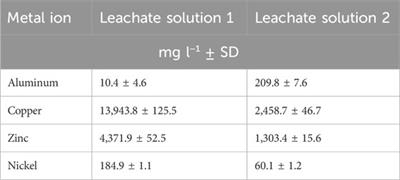This study introduces a sustainable approach using spent brewer’s yeast as a biosorbent for the selective recovery of valuable metals from polymetallic waste streams. By adjusting pH levels in a stepwise manner, it’s possible to selectively and efficiently recover metals such as aluminum, copper, zinc, and nickel. Furthermore, the process allows for the recycling and repeated use of yeast biomass, marking it as a cost-effective and eco-friendly solution for addressing the challenges of metal recovery from e-waste.
Main Points
Potential of spent brewer's yeast in metal recovery
Spent brewer’s yeast, particularly Saccharomyces cerevisiae, is identified as a potent biosorbent for the recovery of metals like aluminum, copper, zinc, and nickel from polymetallic waste streams, including e-waste.
Introduction of a stepwise pH-adjustment biosorption process
The study presents a novel, sustainable, and cost-effective method for selective metal recovery by adjusting the solution pH stepwise, allowing for the targeted adsorption of different metals.
Recycling and reusing yeast biomass enhances sustainability
The reuse of yeast biomass for multiple cycles of biosorption demonstrates the process’s economic advantage and environmental benefit, contributing to sustainable waste management practices.
Insights
Spent brewer's yeast, a waste by-product of the brewing industry, has promising potential as a low-cost, eco-friendly biosorbent for metal recovery from e-waste.
Saccharomyces cerevisiae, which can be obtained as the second major by-product from the brewing industry, offers several advantages such as a high cell wall content with several functional groups available for metal binding, making it an efficient biosorbent.
The study proposes a stepwise biosorption process for selective metal recovery from polymetallic solutions.
This process employs a stepwise adjustment of pH levels to selectively recover economically important metals like aluminum, copper, zinc, and nickel from polymetallic solutions onto the surface of spent brewer’s yeast.
The yeast biomass used for biosorption can be recycled and reused up to five times, making the process cost-effective and sustainable.
After the desorption of metal ions, the yeast biomass could potentially be recycled and reused for further biosorption cycles, enhancing the sustainability and cost-effectiveness of the metal recovery process.

